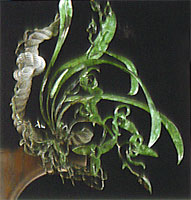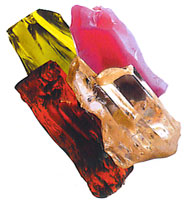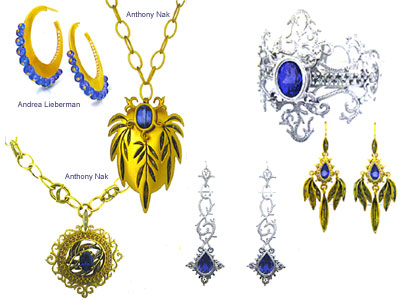|
 |
|
| |
The attitude towards gemstones
by different cultures may be similar, or different, based upon faith,
history, or gem value. Thousands of years ago, the Chinese believed "jad"
to be very precious and auspicious to its possessors. Jade, it was considered,
brought about prosperity, stability, luck and long life.
The ancient Chinese referred
to jade as "yu" and believed it to be sacred, as a gift from
heaven. Jade symbolized the 5 virtues of wisdom, justice, compassion,
modesty and courage. Its toughness and intensity also symbolized intelligence
and courage, whereas its vivacity and texture exemplified justice, gentleness
and gratitude.
|
|
| |
|
|
| |
Jade comes in many fine nuances
of green, but is also found in shades of red, violet, black, yellow, brown,
etc. A popular version contains different tones of green. Throughout time,
Jade has been cut, fashioned, formed and polished into many unique designs
tortoise shell, oval, beaten, etc. Jade jewelry features a wide variety
of designs and forms, including rings, earrings, bracelets, pendants,
necklaces, amulets, brooches, etc.
|
|
| |
Traditionally, the Chinese
have long admired jade carved to resemble various creatures, such
as a fish, tortoise, cricket, tiger's head, or double tiger's head,
known as "tao tieh", often used as an amulet. In Chinese
faith, jade is carved into bi discs (discs with a hole in the center),
which symbolize heaven and are known as "pi". Chinese
belief is that heaven is round and the earth is rectangular, which
is why jade is cut into a rectangle, called "tsung."
In addition, the Chinese
believe jade offers the power of creativity and protection against
ill fortune. If the jade worn is bright, the wearer will be lucky.
On the contrary, if it is dull or cracked, it is believed the wearer
will encounter misfortune.
|
|
 |
|
|
| |
Jade classified by color, quality, price and popularity
1. Of all the green jades, imperial jade is the rarest and carries the
highest price for its exceptional quality. It has a dark green hue, rather
like emerald, with high vivacity. The price depends largely on a combination
of its vivacity, color intensity and size. Occasionally, jade with a similar
high vivacity, or brightness, is mistaken for the rare imperial jade.
Jade of a lower quality and varying price levels include fine apple green
jade, fine mottled green with white jade and moss green jade.
|
|
| |
 |
|
2.
Lavender jade is also quite popular and priced considerably higher
according to its vivacity and color intensity.
3. White jade is priced relatively low. A real white, bright, or
slightly yellowish version with a fine texture may attract a higher
price. Its popularity is second only to green jade.
4. Jade of other colors such as yellow, orange, red, indigo, gray,
black, etc. is also popular, with prices dependent on their individual
beauty, shape, taste and time. |
|
|
| |
Jade
features considered to reflect high quality
1. Brightness, not dull as stone, where light can penetrate its texture
and reflect a bright luster.
2. Jade should protrude with the right proportions, not too flat. Jade
in the form of a rice pile is quite popular among people who believe it
symbolizes prosperity. Others may not be attracted, as it is not proportionate,
difficult to set as jewelry and easily scratched.
|
|
| |
6.
Natural jade has many colors -green, violet, red, yellow, orange, indigo,
white, gray, etc. Popular green jades are those with a color intensity resembling
peacock tails, or emerald.
|
|



